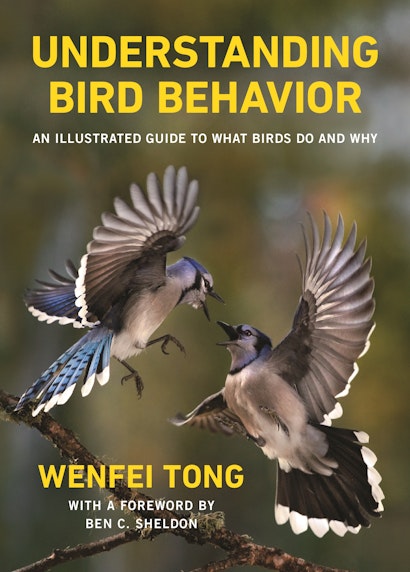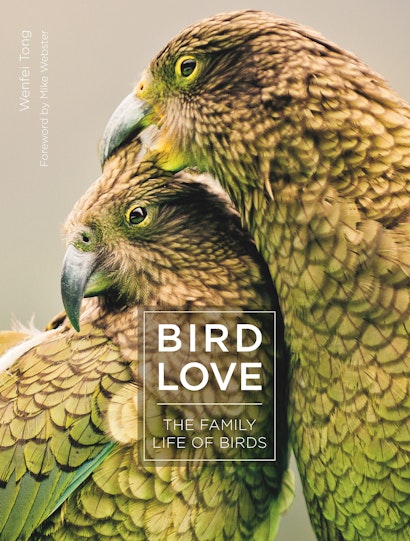Birds are intelligent, social creatures that exhibit a wide array of behaviors, often forming bonds that are variable and full of inherent contradictions involving both cooperation and conflict. Wenfei Tong, a research associate at Harvard University, explores these avian relationships in her two books – “Bird Love” and “Understanding Bird Behavior”. While discussing “Bird Love”, Wenfei will highlight the light and dark sides of bird family life, from the benefits of long-term monogamy to sibling rivalry and parental parasitism. Then, in “Understanding Bird Behavior”, Wenfei provides an up-close look at how birds conduct themselves in the wild, from how their sometimes devious methods of finding foods to the way they defend their nests. Across both titles, Wenfei shares compelling insights into bird behavior, with beautiful photographs and often humorous examples. Wenfei is a biologist with a passion for understanding and conserving the natural world. She went to Princeton and Oxford as an undergraduate, and has a PhD in evolutionary biology from Harvard. She has been a keen birder since the age of 12, and has gone on to share her love of birds through her paintings, photography, research, teaching, nature guiding and writing. Wenfei has recently moved to New York City from Alaska, where she was a professor in the biology department. She spends part of her summers in Montana, where she guides birding and nature tours on horseback.
Use code DNS-FG for 30% off the purchase of Bird Love and Understanding Bird Behavior and free shipping through 11/15/20.
About Understanding Bird Behavior
Birds are intelligent, sociable creatures that exhibit a wide array of behaviors—from mobbing and mimicking to mating and joint nesting. Why do they behave as they do? Bringing to light the remarkable actions of birds through examples from species around the world, Understanding Bird Behavior presents engaging vignettes about the private lives of birds, all explained in an evolutionary context.
We discover how birds find food, relying on foraging techniques, tools, and thievery. We learn about the courtship rituals through which birds choose, compete for, woo, and win mates; the familial conflicts that crop up among parents, offspring, and siblings; and the stresses and strains of nesting, including territory defense, nepotism, and relationship sabotage. We see how birds respond to threats and danger—through such unique practices as murmurations, specific alarm calls, distraction displays, and antipredator nest design. We also read about how birds change certain behaviors—preening, migration, breeding, and huddling—based on climate. Richly illustrated, this book explores the increasing focus on how individual birds differ in personality and how big data and citizen scientists are helping to add to what we know about them.
Drawing on classic examples and the latest research, Understanding Bird Behavior offers a close-up look at the many ways birds conduct themselves in the wild.
- Compelling insights into bird behavior
- Classic examples and the latest research, including work by citizen scientists
- Fascinating vignettes about the private lives of birds, from finding food and family life, to coping with climate and other threats
- 150 detailed color illustrations and photographs
About Bird Love
Bird Love looks at the extraordinary range of mating systems in the avian world, exploring all the stages from courtship and nest-building to protecting eggs and raising chicks. It delves into the reasons why some species, such as the wattled jacana, rely on males to do all the childcare, while others, such as cuckoos and honeyguides, dump their eggs in the nests of others to raise. For some birds, reciprocal promiscuity pays off: both male and female dunnocks will rear the most chicks by mating with as many partners as possible. For others, long-term monogamy is the only way to ensure their offspring survive.
The book explores the wide variety of ways birds make sure they find a mate in the first place, including how many male birds employ elaborate tactics to show how sexy they are. Gathering in leks to display to females, they dance, pose, or parade to sell their suitability as a mate. Other birds attract a partner with their building skills: female bowerbirds rate brains above beauty, so males construct elaborate bowers with twig avenues and cleared courtyards to impress them.
Looking at the differing levels of parenting skills across species around the world, we see why a tenth of bird species, including the fairy-wrens of Australia, have helpers at the nest who forgo their own reproduction to assist the breeding pair; how brood parasites and their hosts have engaged in evolutionary arms races; and how monogamous pairs share—or relinquish—their responsibilities.
Illustrated throughout with beautiful photographs, Bird Love is a celebration of the global diversity of avian reproductive strategies.
Wenfei Tong is a biologist, conservationist, and nature guide. She is associate editor at Nature Communications and owner of Big Sky Safaris.

